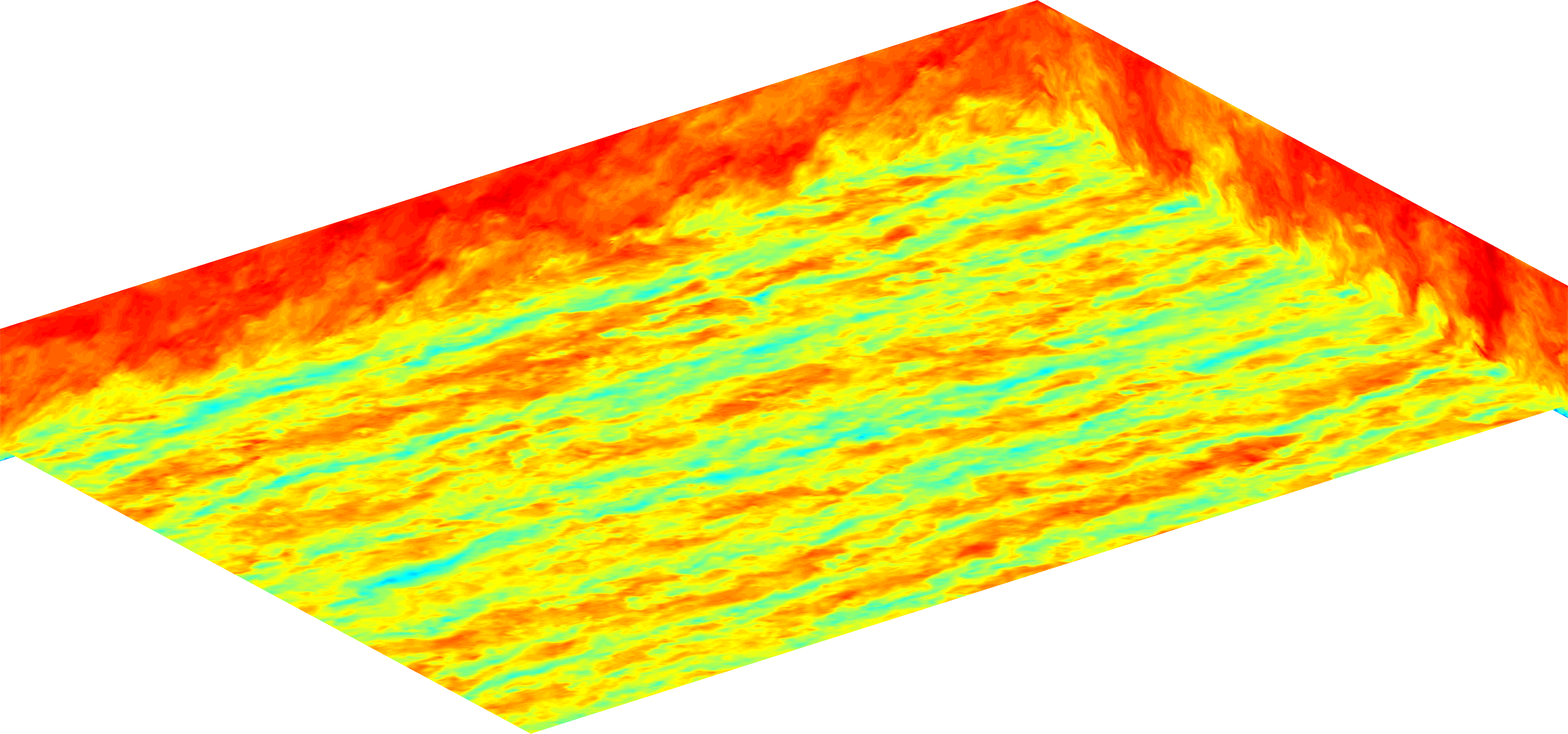LESGO

LESGO is a parallel pseudo-spectral large-eddy simulation code.
Actuator disk indicator function
Each wind turbine actuator disk with finite thickness \(s\) is represented by the normalized indicator function
\[ \mathcal{I}(\mathbf{x}) = V^{-1}\left[ H(\hat{x}+s/2) - H(\hat{x} - s/2) \right] H(D/2 - \hat{r}) \] where \(V = s \pi D^2/4\) is the volume of the disk, \(H(x)\) is the Heaviside function. The coordinate system of the actuator disk is denoted by hats with the \(\mathbf{\hat{e}_1}\) unit vector opposite of the thrust force and \(\hat{r}^2 = \hat{y}^2 + \hat{z}^2\). To avoid Gibbs phenomena around the actuator disk forcing, a smoothed indicator function
\[ \mathcal{R}(\mathbf{x}) = \int G(\mathbf{x}-\mathbf{x’}) \, \mathcal{I}(\mathbf{x’}) \, d^3\mathbf{x’} \]
is used to apply the thrust force on the flow and average the velocity field over the disk. The filtering is applied using a Gaussian kernel
\[ G(\mathbf{x}) = \left(\frac{6}{\pi \Delta}\right)^{3/2} \exp \left( -\frac{6\lVert\mathbf{x}\rVert^2}{\Delta^2} \right) \]
with a filter width \(\Delta = \alpha h \) that is based on the grid size \(h = \sqrt{dx^2 + dy^2 + dz^2}\).
The smoothed indicator function can be decomposed \[ \mathcal{R}(\mathbf{x}) = V^{-1} \mathcal{R}_1(\hat{x}) \mathcal{R}_2(\hat{r})\] into a normal component \[ \mathcal{R}_1(\hat{x}) = \left(\frac{6}{\pi \Delta}\right)^{1/2} \int \left[ H(\hat{x}’+s/2) - H(\hat{x}’ - s/2) \right] \exp \left( -6\frac{(\hat{x}-\hat{x}’)^2}{\Delta^2} \right) \, d \hat{x}’ \] and radial component \[ \mathcal{R}_2(\hat{r}) = \frac{6}{\pi \Delta} \int \int H(D/2 - \hat{r}’) \exp \left( -6\frac{(\hat{y}-\hat{y}’)^2 + (\hat{z}-\hat{z}’)^2}{\Delta^2} \right) \, d \hat{y}’ \, d \hat{z}’. \] LESGO calculates the the smoothed indicator function at each point using the analytic solution to the normal component
\[ \mathcal{R}_1(\hat{x}) = \frac{1}{2}\mathrm{erf}\left(\frac{\sqrt{6}}{\Delta}\left(x+\frac{s}{2}\right) \right) - \frac{1}{2}\mathrm{erf}\left(\frac{\sqrt{6}}{\Delta}\left(x-\frac{s}{2}\right) \right)\]
and numerically computing \(\mathcal{R}_2(\hat{r})\) on a grid finer than the simulation grid.